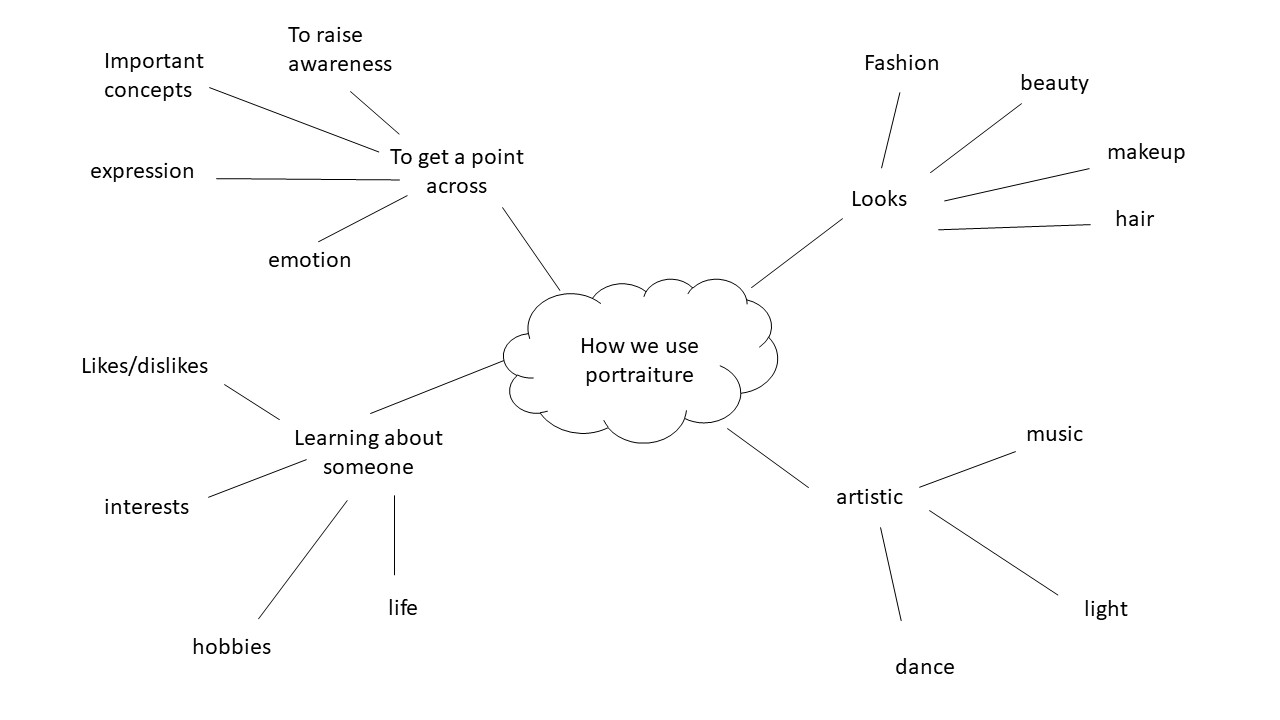
Daily Archives: November 10, 2018
Filters
Portraiture mood board
mood board of types of portraits
Portraiture can be done in several different ways. Its important to pick the type that’s most appropriate according to what your responding to. Below is a mood board showing different styles of portraiture suitable for different occasions.
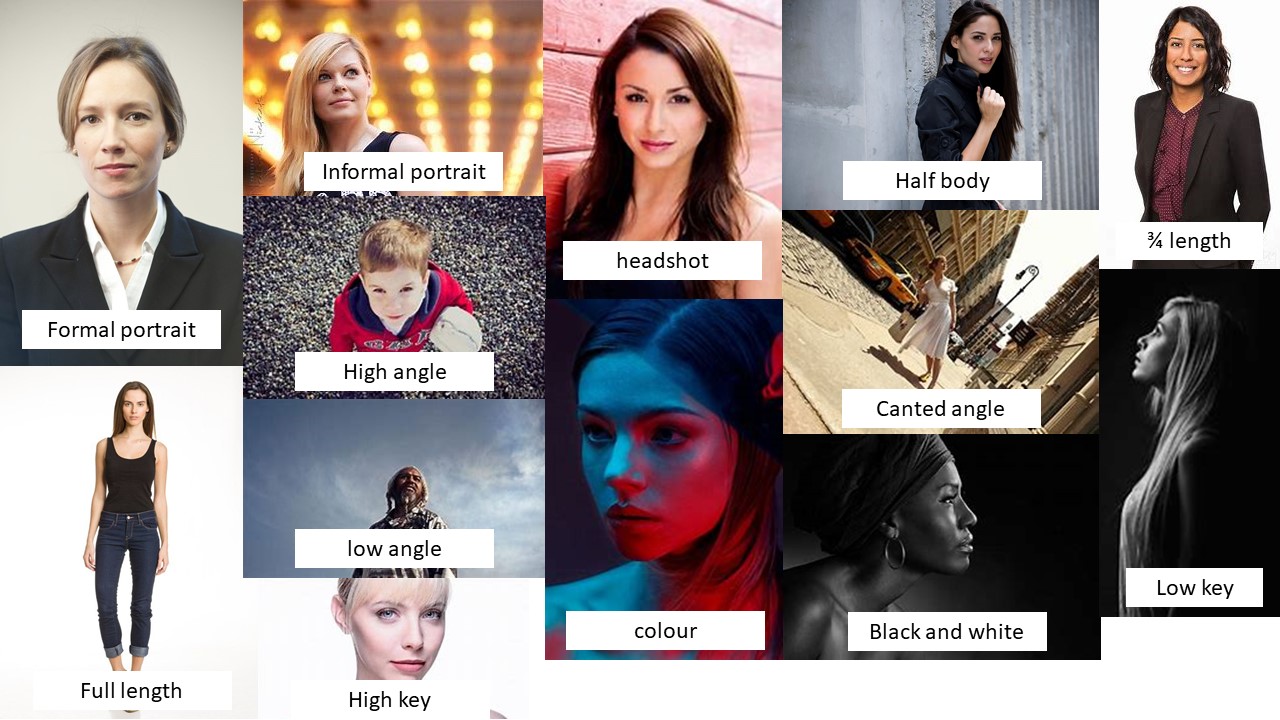
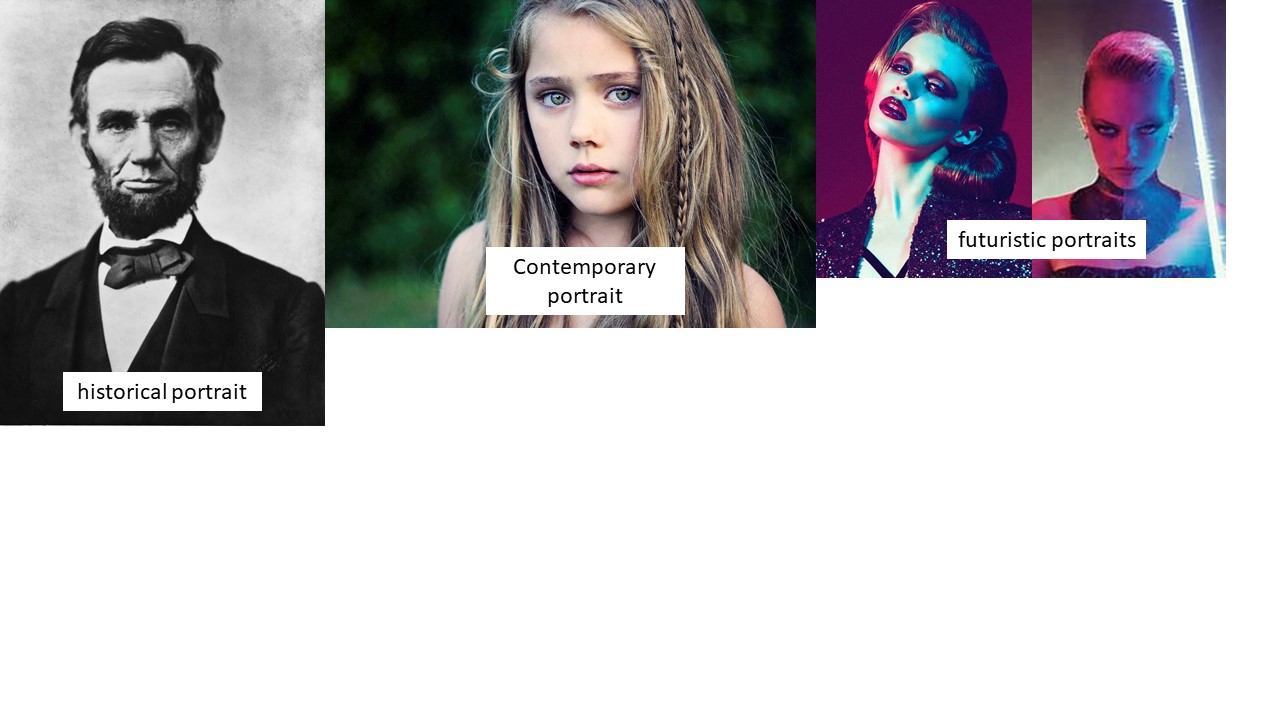
Environmental Portraiture – Post 2 (Arnold Newman Case Study)
Arnold Newman:
Born in Manhattan (3rd March – 1918), Newman grew up in Atlantic City, New Jersey and later moved to Miami Beach, Florida. In 1936, he studied painting and drawing at the University of Miami. Unable to afford continuing after two years, he moved to Philadelphia to work for a studio, making 49-cent portraits in 1938. Newman then returned to Florida in 1942 to manage a portrait studio in West Palm Beach. Three years later, he opened his own business in Miami.
Arnold Newman is often associated with being the first photographer to use “environmental portraiture”, in which Arnold placed the subject in a carefully controlled setting to capture the essence of the individual’s life or work.
Newman normally captured his subjects in their most familiar surroundings with visual elements representing their professions and personalities (such as tools in a workshop or instruments in a musicians studio). Using a large-format camera and tripod, he worked to record every detail of a scene to create an in depth and accurate image of the subject’s life.
“You don’t take pictures with your camera. You take pictures with your mind and your heart.” -Arnold Newman
Mood Board:
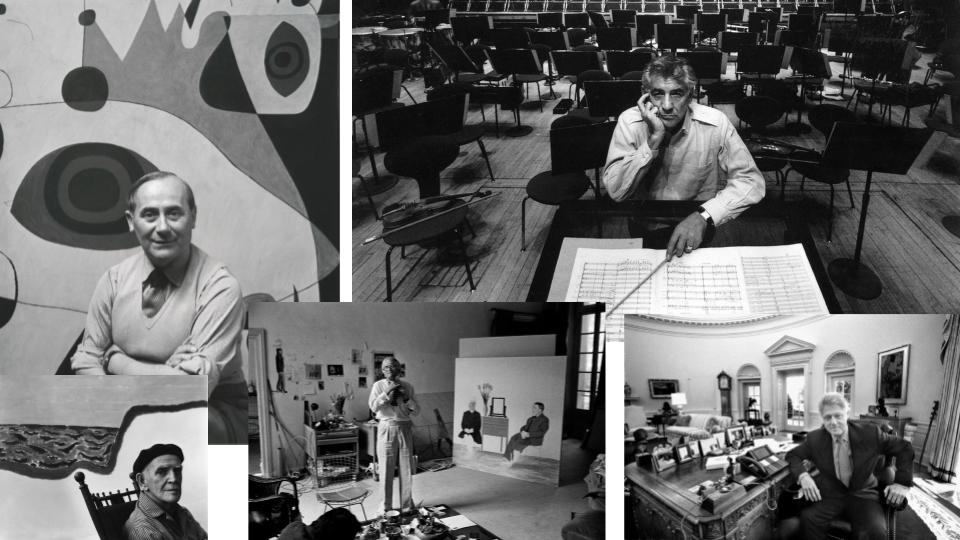
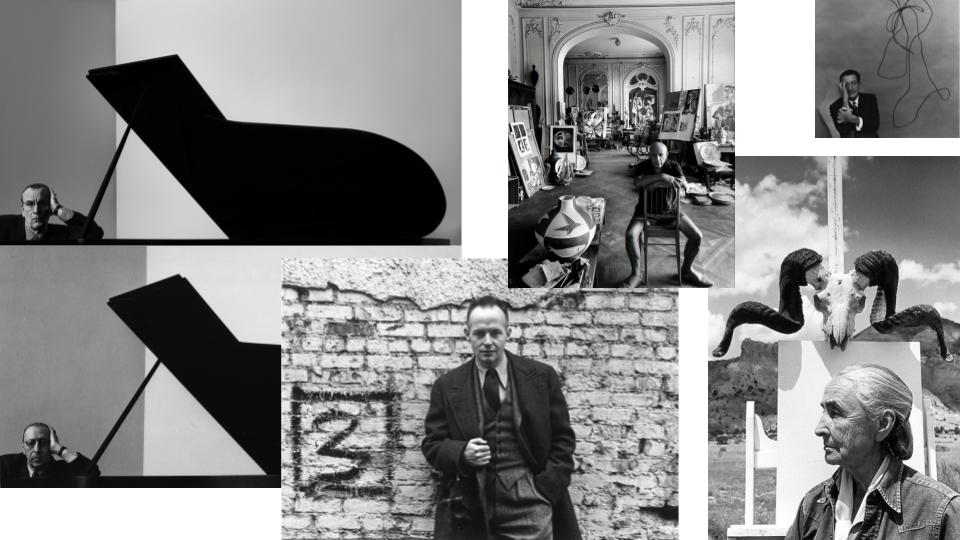
Selected Image:
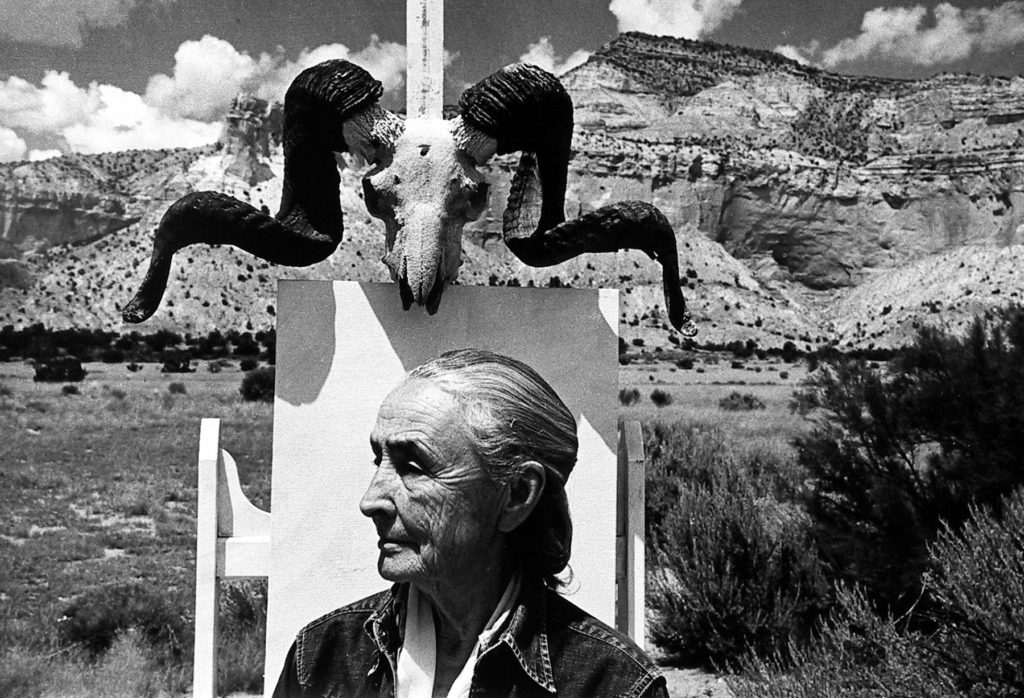
Georgia O’Keeffe, Ghost Ranch, New Mexico, 1968
Gelatin silver print; printed c.1968
9 1/8 X 13 1/2 inches
Technical:
- Contrast
- Use of shade
- Daylight
- Contrast for emphasis and highlights
- Close up (intimate)
Visual:
- Old woman in the foreground facing off to the left of the image, possibly in thought.
- Desert setting with few clouds creating ambience and light which casts shadows on the texture of the mountains in the background.
- Dark shrubs on the right of the image break up symmetry of the background and coincides with the shadow cast by the female figure.
- Animal skull on painting easel connoting “country” feel and suggesting the female in the image may be an artist at her usual painting spot.
Contextual:
- The photograph was taken of Georgia O’Keeffe in New Mexico in 1968.
- O’Keeffe was a modernist painter living in the desert in New Mexico and spent much of her time going on walks and gathering inspiration for her art.
Conceptual:
- Newman’s inspiration for the image came from the setting on O’Keeffe’s home area.
- The animal skull and clearly barren background show the setting of where O’Keeffe lived and showed the landscape from which she gathered much of her inspiration.
- O’Keeffe is the only person in the image with no sign of live past her canvas conveying a solitary, however the artist doesn’t appear sad, showing different people find happiness and inspiration in different places.
Georgia O’Keeffe:
Georgia O’Keeffe (born 15th November 1887) first traveled to New Mexico in 1929 and moved there permanently in 1949, following the death of her husband, Alfred Stieglitz. Although she achieved early success as a painter living in the East, the landscape of the desert gave O’Keeffe her greatest inspiration.
She often painted familiar subjects such as flowers, buildings, and objects found on walks around her remote home. She did so in a unique way, often transforming common items into colourful pieces of art, focusing heavily on line and form within her work. By the late 1940s O’Keeffe was one of the best-known and original artists in America.
Some of O’Keeffe’s Work:
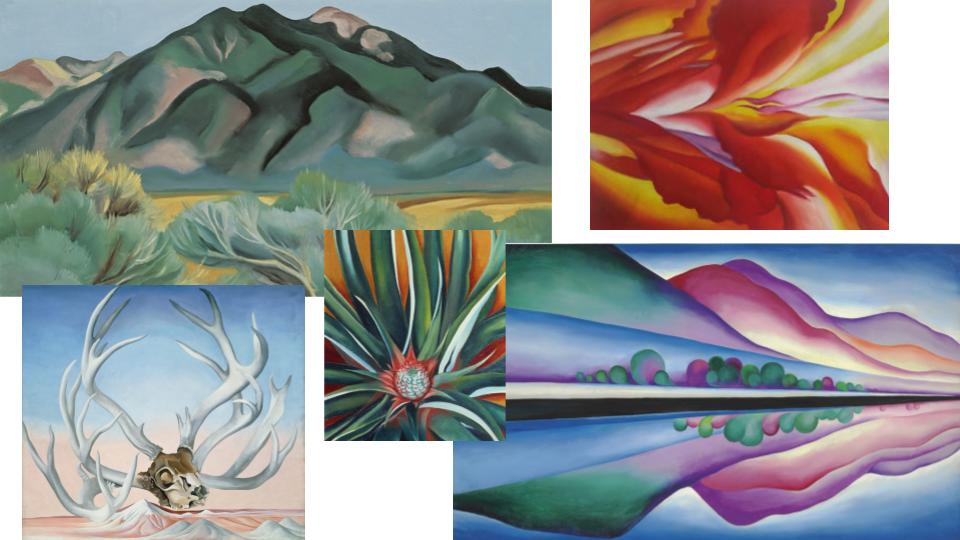
August Sander
August Sander was a German photographer who attempted to produce an extensive photographic document of German people. He was the son of a mine worker, and Sander did the same work initially as his father. He got his first camera in 1892 and took up photography as a hobby. After the military he pursued it professionally, working in a series of photographic studios in Germany. By 1904 he had his own studio in Linz and after his army service in World War I he settled permanently in Cologne and became friends with photographers and painters dedicated to the New Objectivity. After photographing local farmers near Cologne, Sander was inspired to produce a series of portraits of German people from all levels of society. His portraits were usually sharp, photographed straight on in natural light, while the subjects class and profession was shown through clothing, gesture, and backdrop.


Contextual: Sander was a German portrait and documentary photographer. During the nazi period he struggled to maintain his job. This image was in Sander’s portrait photo book ‘Face of our Times’ which was published in 1929, and also appears in the first volume of Sander’s incomplete project ‘People of the twentieth century’ which was planned as an extensive series of portraits of the German population, classified into seven groups by social class. These farmers, influenced by popular culture and advertising, may represent a trend that saw workers move away from the land towards the city.
Visual: There are three figures standing in the foreground against an out of focus landscape. The repetition of each figure’s posture, their walking sticks, dark suits, and hats creates a lateral rhythm across the picture plane. Each figure is looking directly at the camera. The shapes of their heads and hats are depicted against the blank sky. Their expressions are serious. Their shared pose is a mixture of formal (stiff posture) and informal (cigarette. They appear to be on their way to an event and have dressed up formal. They are not in their usual work clothes. The rule of thirds is used to locate each figure from left to right and top to bottom. There is also an implied movement from left to right since their feet are pointing towards their destination.
Technical: Apparently this image was taken with a large format glass plate camera on a tripod with a long shutter speed ( common in portrait photographs). The photographer uses available early evening light. Shallow depth of field can also be seen through the image which has been caused by a relatively wide aperture and focal length of the lens.
Arnold Newman – Alfred Krupp
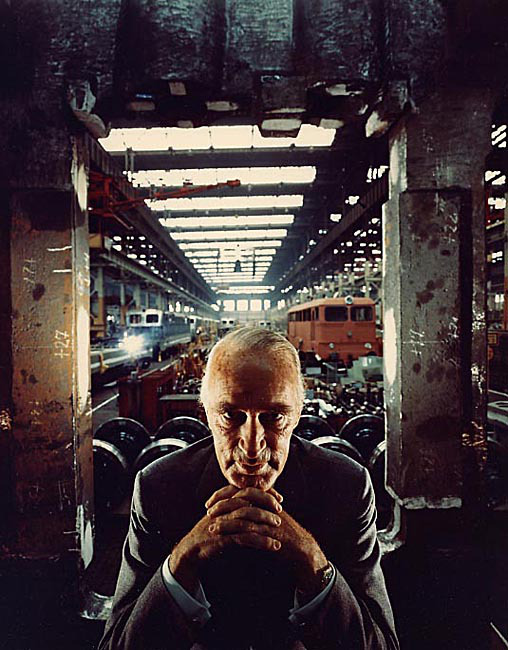
Emotional Response: When I first saw this I really liked the photo, this was because of the contrast between the light and the dark, in terms of the foreground and the background. I also like the the way that Newman has captured that depth of the photo. I also quite like the symmetry as Krupp is in the center of the shot, and how the Pillars also create that nice line of symmetry down the sides.
Visual: Visually this photo is very appealing to the eye, as there are nice lines of symmetry vertically down. This gives the portrait a spooky/eerie feel to it. Within the photo the way the facial expression has been presented and the way he is holding his hands makes him look very sinister, with this in topic, there doesn’t seem to be any parts of beauty, only a dark, depressing background.
Technical: I feel like the first thing that you are drawn to in this portrait is Krupp’s eyes, this gives you an all round feel of the photo. The lighting has been very well balanced with the use of natural lighting in the background, and on Krupp’s face with the aid of a smaller light, possibly a lamp giving him that glow/lit up feature on his face and forehead.
Conceptual: This photo was taken in 1963 by Jewish photographer Arnold Newman. At first Newman was hesitant with taking this photo as Krupp was a well known helper with Nazi’s in World War II, using his company in which he took over from his father as slave labor camp in order top make weapons in aid to help the Nazis in their seek for world domination in World War II. When taking this photo Newman tried to make Krupp as sinister looking as possible to show the world and expose him in what he did during the difficult times.
Street Photography Case Study – Jeff Mermelstein
I wanted to look at Jeff Mermelstein’s work as it seems to focus mostly on people doing everyday acts and living normal lives, and this is what I wanted to highlight in my photo shoot. Jeff Mermelstein was born in 1957 in New Jersey, and is perhaps most known for his detailed photographical documentation of the September 11th attacks on the World Trade Center and their aftermath. However he also has extensive experience in ‘everyday life’ street photography, capturing some of the strange and interesting things people do on a regular basis. Mermelstein studied at Rutgers College and the International Center of Photography and went on to have images printed in publications such as LIFE, The New Yorker, and The New York Times Magazine.
![]()

Mermelstein now lives in New York City and this is where most of his street photographs come from. Due to the busy, rushing and cramped streets of New York, it provides him with a lot of opportunity to get interesting pictures. He has also taught at the International Center of Photography in New York since 1988 and has released 4 books over the course of his career(“SideWalk”-1999, “Side walk: Per le strade di New York”-1999, “No Title Here”-2001, “Twirl×Run”-2009). For my Practical photo shoot I will be trying to use some of the techniques used in Mermelstein’s work, and try to imitate elements of his photography into my own.
![]()
One of the images that stuck out to me was this image below, as it has multiple ‘layers’; What I mean by this is that by using a shallow focus, Mermelstein has created multiple areas of focus. As you can see, the most obvious thing that immediately stands out is the reflection in the woman’s glasses, with the sharp reflections of the buildings across the street, however, in using this depth of field, he also has the people in the background of the shot in focus, making the city seem so busy at ground level, but the reflection in the glasses make it seem much more tranquil and quiet in comparison to the bustling crowd behind.

Environmental Portraits
An environmental portrait is a portrait executed in the subject’s usual environment, such as in their home or workplace, and typically illuminates the subject’s life and surroundings.
By photographing a person in their natural surroundings, it is thought that you will be able to better illuminate their character, and therefore portray the essence of their personality, rather than merely a likeness of their physical features. It is also thought that by photographing a person in their natural surroundings, the subject will be more at ease, and so be more conducive to expressing themselves, as opposed to in a studio, which can be a rather intimidating and artificial experience.
Contact sheets:


In the images I took, I aimed to get the subjects in their natural environments, doing what they normally do. I got someone driving, someone painting, and another doing their school work. These are all usual tasks which the subjects in the pictures take on in their daily lives.
Chosen best edited images:
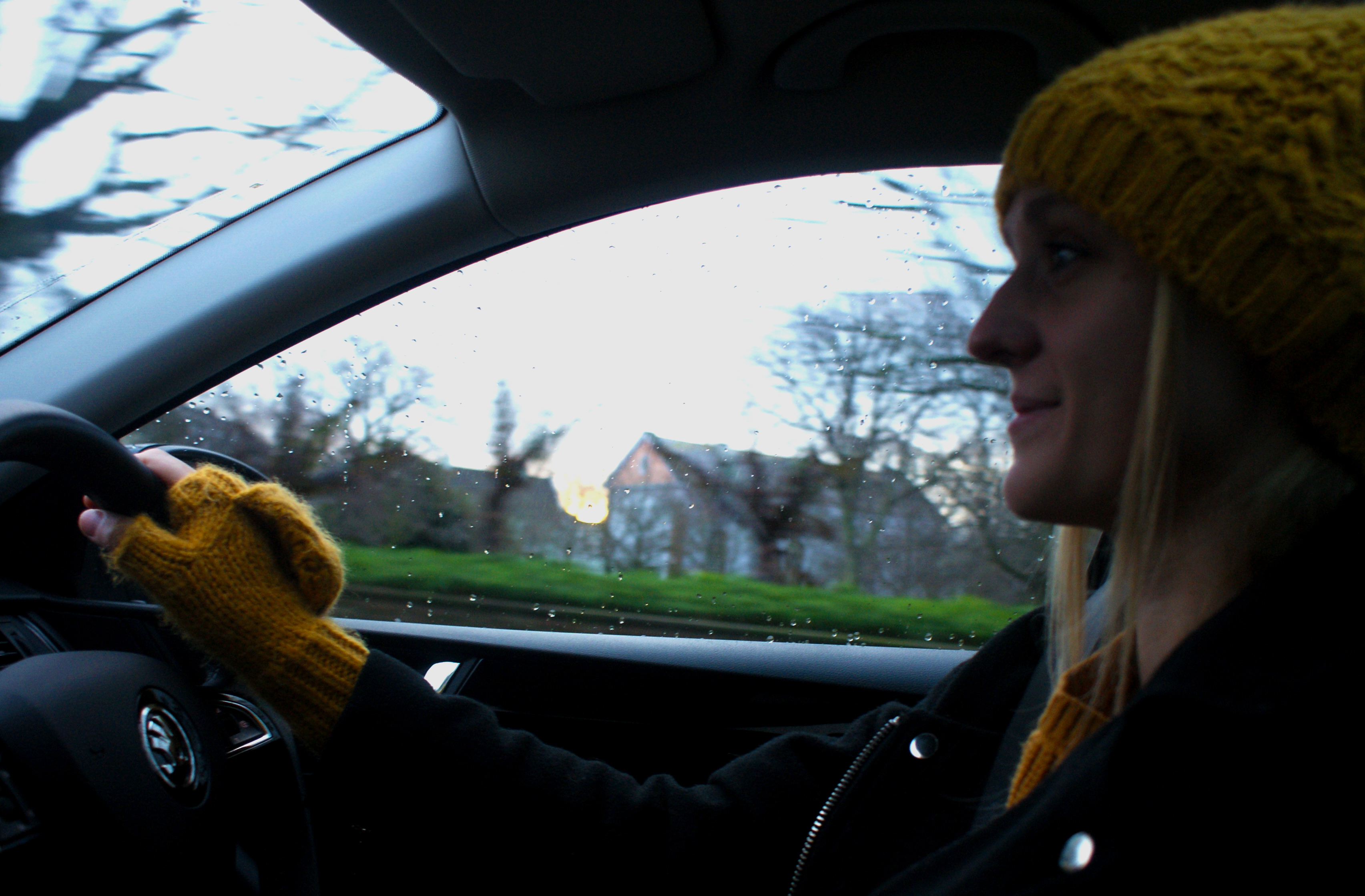

I chose these images because I feel they best represent the idea of environmental portraits out of all the images I took. As you can see in the two images I chose, one is of someone driving and the other is of someone doing their work, both being tasks they do in their daily lives. The fact that they’re turned away from the camera and seem immersed in their tasks adds a bit of reality to it.

